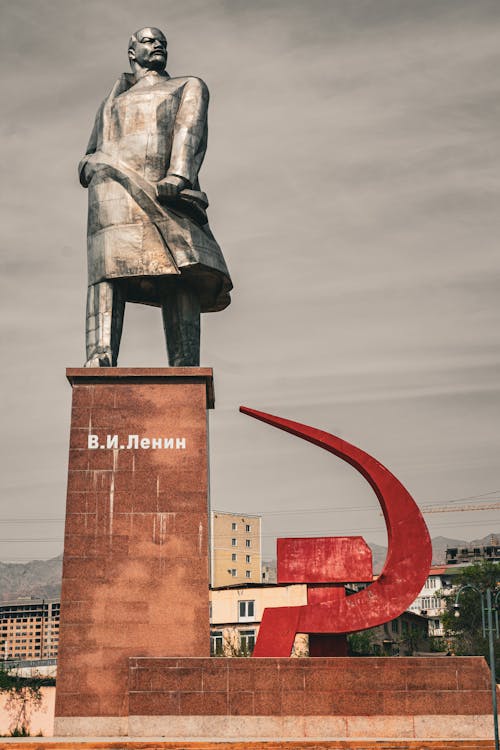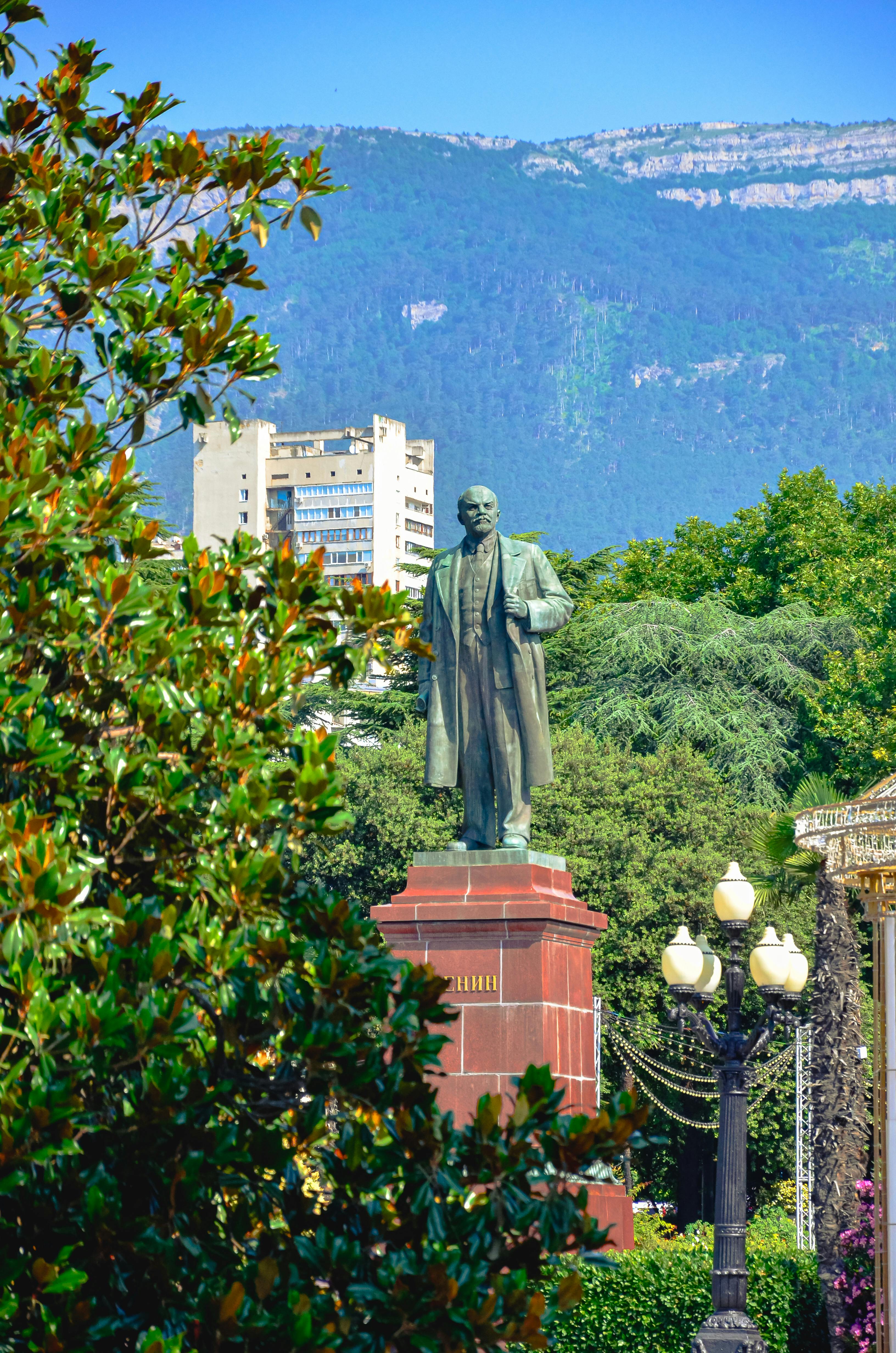Early Life and Revolutionary Beginnings
Vladimir Ilyich Ulyanov,(22 April 1870 – 21 January 1924) was a Russian communist revolutionary, politician and political theorist. famously known as “Lenin,” (Vladimir Lenin) stands as the mastermind behind Russia’s transformative 1917 Bolshevik revolution and the inaugural leader of the Union of Soviet Socialist Republics (USSR). His life’s journey not only shaped the course of Russian history but also left an indelible mark on the global stage, influencing political ideologies and sparking revolutionary movements worldwide.

Formative Years and Education
Born in 1870 in Simbirsk, Lenin’s revolutionary zeal ignited after the execution of his older brother, Alexandr, for attempting to murder the Russian Tsar, and his expulsion from Kazan University as the ringleader of a student uprising. These early experiences fueled Lenin’s commitment to revolutionary Marxism. In 1889, Lenin shifted towards Marxism and later earned a law degree from St. Petersburg University. Despite facing exile to Siberia from 1897 to 1900 due to his revolutionary activities, Lenin’s determination persisted. This period set the stage for his eventual return and significant impact on history.
Revolutionary Pursuits in Europe
Adopting the pseudonym “Lenin,” he continued revolutionary activities in Europe. Returning to Russia for the 1905 Revolution, Lenin faced setbacks, prompting his return to Europe in 1907. This period of his life showcased not just his resilience but also the evolution of his revolutionary ideology. Lenin’s exposure to different European societies and political climates contributed to the development of his vision for a revolutionary transformation of Russia.
The Epoch of Lenin’s Deeds
The Russian Revolution
April 1917 saw Lenin’s return, capitalizing on war-weary Russians’ desire for change. The October Revolution in 1917 marked the rise of Lenin’s Bolsheviks, establishing a “dictatorship of the proletariat.” This revolutionary triumph wasn’t merely a local event; it sent shockwaves across the global political landscape, influencing other revolutionary movements worldwide. The concept of a socialist state and the overthrow of the existing order resonated far beyond Russia, inspiring similar movements in various corners of the world.

The Russian Civil War
Lenin’s Red Army clashed with the White Army, leading to the implementation of “War Communism” to fund the conflict. This period witnessed the Red Terror and the brutal suppression of opposition. The intricacies of this civil war and its repercussions, both within Russia and internationally, contribute to Lenin’s complex legacy. The War Communism policies, while necessary for the survival of the Bolshevik regime, inflicted severe economic hardships, leaving scars on the country.
Forming the USSR
War Communism’s economic toll led to the New Economic Policy (NEP), allowing limited private enterprise. Lenin’s strokes in 1922-1924 preceded his death in 1924, a year after the formation of the USSR. The establishment of the Soviet Union marked not just the end of an era but the beginning of a new geopolitical chapter with lasting consequences. Lenin’s attempt to pivot towards a more pragmatic economic approach with the NEP was a recognition of the need for economic stabilization, although it came at the cost of certain socialist ideals.

Lenin’s Legacy: A Complex Tapestry
Lenin’s legacy is intricate, echoing through the corridors of history. While aiming to uplift the impoverished, his tactics resulted in millions of deaths. The USSR’s formation, later under Stalin’s rule, brought further brutality, creating a complex legacy that continues to shape contemporary geopolitics.
Lenin’s Writings and Ideology
Lenin’s prolific writings on Marxism, capitalism, and revolution remain influential. Key works include the April Theses, The Development of Capitalism in Russia, and Imperialism, the Highest Stage of Capitalism. These writings not only shaped his era but continued to influence political discourse, making them essential in understanding the roots of Lenin’s ideology. The April Theses, in particular, outlined Lenin’s vision for a socialist state and provided a blueprint for the subsequent revolutionary actions.
Reflecting on Lenin’s Impact
Vladimir Lenin’s Demise
Lenin’s death in 1924 marked the end of an era, with Stalin assuming leadership. This transition not only shifted the political landscape in the USSR but also had repercussions globally, setting the stage for the Cold War and shaping the balance of power for decades.
Lenin’s Revolutionary Triumphs
Lenin’s leadership during the Bolshevik uprising shaped 20th-century history, influencing global economic, political, and strategic dynamics. The impact of his revolutionary triumphs reverberates even today, influencing modern political ideologies and movements. The concept of a socialist state and the role of the working class in governance became central themes in political discourse, both within and outside the socialist sphere.
Lenin’s World War I Ambitions
During World War I, Lenin sought Russia’s defeat to catalyze the political revolution. Despite being abroad, he fueled the ongoing revolution, showcasing the interconnectedness of global events during a pivotal period in history. Lenin’s anti-war stance and his push for an immediate end to Russian involvement in World War I were instrumental in shaping the political landscape during that tumultuous time.

The Enduring Legacy
Vladimir Lenin’s influence transcends time, leaving an indelible mark on history. His ideas continue to shape political discourse, even as his regime’s brutality and the subsequent Cold War cast a shadow over his legacy. As we reflect on Lenin’s enduring legacy, we navigate through a complex tapestry of historical events that continue to shape the world we live in today.
Lenin’s legacy is a subject of ongoing debate, with proponents highlighting his role in challenging oppressive systems and opponents condemning the atrocities committed under his regime. The initial goals of improving the lives of peasants and the working class were clouded by the harsh realities of the Russian Civil War, the Red Terror, and economic struggles.
Lenin’s Economic Policies
Lenin’s economic policies, especially War Communism, aimed at funding the Civil War but resulted in severe consequences. The nationalization of industries and requisitioning of grain led to economic chaos and widespread famine. The subsequent introduction of the New Economic Policy represented a pragmatic shift, permitting some private enterprise and acknowledging the need for economic stability.
Lenin’s Health and Death
Lenin’s health deteriorated after a series of strokes between 1922 and 1924, making speaking and governing difficult. He died on Jan. 21, 1924, barely a year after the Bolsheviks established the USSR. His body was embalmed and put on display in a mausoleum in Moscow’s Red Square, where it remains today.
Criticisms and Complexities
The complexities of Lenin’s legacy extend beyond the borders of Russia. While some still revere him as a revolutionary hero, others condemn the human cost of his actions. The Red Terror and the suppression of dissent cast a dark shadow over the ideals of a more equitable society that Lenin initially championed.
Modern Reckonings
In the contemporary era, Lenin’s legacy is subject to reassessment. The impact of his ideas on socialist movements and the geopolitical repercussions of the Soviet Union’s existence shape discussions on political philosophy, governance, and international relations. The enduring question of whether the ends justified the means lingers in historical analyses of Lenin’s rule

Comments
Post a Comment